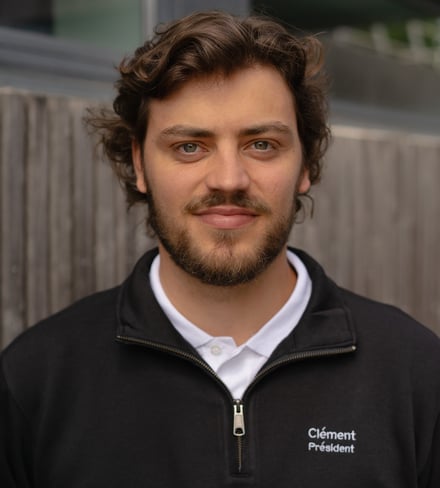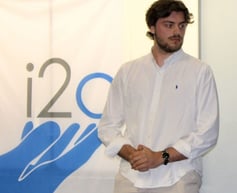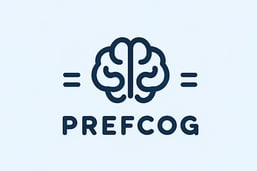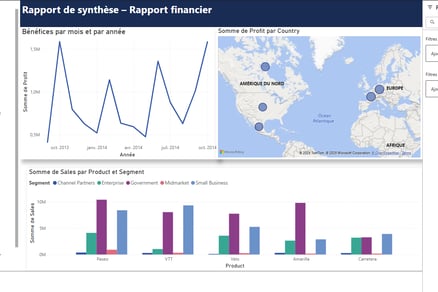Clément Ouvry
I'm currently an engineering student at the École Nationale Supérieure de Cognitique (ENSC) in France. I'm passionate about innovation, with a strong interest in Data Science and AI. My goal is to work in R&D in this field after my studies, so that I can bring my own vision of innovation to my career as a cognitive scientist.
To do this, I'm looking to gain a little more experience in the professional world. So I'm actively looking for a 4-month internship, convinced that my technical engineering profile, combined with my expertise in cognitive sciences, is a unique asset on the market.
Who I am ?


Data science & IA
Statistical analysis and modeling of body fat - Construction of a multiple linear regression model to predict body fat percentage as a function of anthropometric variables : report
Artificial Intelligence :
Implementation and analysis of efficient heuristics to reduce the number of nodes explored in a simulated road environment: : report - Repository (run on VisualStudio)
Data Science :
Data science courses at ENSC: : Probability and Statistics, Inferential Statistics and Data Analysis, Statistical Modeling & Mathematical Modeling.
IA course at ENSC : Fundamentals of Artificial Intelligence, Symbolic Artificial Intelligence, Machine learning & the potential of neural networks .
Experiences :
Training courses :
Machine Learning Crash Course (Google) : Google's intensive introduction to the fundamentals of machine learning, covering key concepts, TensorFlow programming and hands-on interactive exercises. Link
AI and IBM Watson Introduction (at l'ENSC) : Discover Watson tools for developing, deploying and integrating AI solutions in cloud environments.
Courses FIDLE Deep Learning (CNRS/UGA/MIAI Grénoble) (in progress) : Practical introduction to deep learning with Python, Keras and TensorFlow, in a scientific and reproducible framework. Link
Neural Networks (3Blue1Brown) (in progress) : Deepen the mathematical foundations of neural networks (gradient descent, backpropagation) via dynamic, interactive visualizations. Link
Ozone pollution modeling - Prediction of the daily ozone peak from meteorological data collected in Rennes (summer 2001), by analyzing the impact of variables such as temperature, cloud cover, wind and previous day's concentration Code (en R)
Prediction of heart disease by machine learning: Design of a logistic regression model with Scikit-learn to predict the presence of heart disease from structured clinical data, including preprocessing, training and performance evaluation.
Tools :
Artificial Intelligence : PyTorch, TensorFlow, Collab, scikit-learn, NumPy & pandas
Languages : Python, C#, R, Matlab, JavaScript, GodotScript & Html/CSS
Data & deployment : SQL, Git, GitHub, Docker, Weaviate & netlify
Signal processing :
Image frequency filtering: Design and application of notch filters to remove unwanted frames from an image using the Fourier transform: report
Automatic DTMF tone recognition : frequency analysis of an audio signal to extract a telephone number from the frequencies associated with each digit : report
Signal denoising by wavelet transform : Analysis and filtering of noisy signals using the discrete wavelet transform and universal Donoho thresholding : report
Pattern recognition with graphs : Development of a program to identify digits from oriented graphs represented by adjacency matrices : Repository
Genetic algorithm for lunar landing: Implementation of a genetic algorithm to optimize the direction and intensity of a fixed thrust, enabling a soft landing of a lunar module.
Recognition of handwritten digits with an MLP: Training a multilayer perceptron (MLP) on the MNIST database to automatically classify handwritten digits, via the library.
Junior Entreprise


Junior-Enterprises are educational consultancy associations governed by the French law of 1901, whose social purpose is to help students develop their skills by providing services to professionals.
I was lucky enough to be President of i2c, ENSC's junior enterprise, for the organization's 18th term. I had the opportunity to manage a team of around twenty people divided into five departments: Business Development, Quality, Treasury, Communication and Information Systems. This experience enabled me to put my knowledge of project management into practice, while at the same time strengthening my communication and leadership skills.
Driven by a particularly stimulating collective dynamic, the mandate was marked by several major achievements: the signing of a new partnership, a complete overhaul of our performance indicators (KPIs) and all our processes, and the definition of the structure's future three-year strategy.
Programming
Software engineering and mobile development :
Creation of a back-end in C# with ASP.NET Core and SQLite, integrating customer, product and order management, with REST API and unit tests: report - Repository
Databases :
Web programming :
Conception et développement d’un site web accessible, connecté à une API REST, permettant aux visiteurs de consulter les attractions, créer leur parcours personnalisé, et aux administrateurs de gérer dynamiquement le parc. Repository
Complete modeling (MCD, dictionary, MLD), table creation and SQL query writing to manage members, events, missions and logistical and financial aspects of a student association. Report
Development of a ReactJS application using the Spotify API and a spaced repetition system to train the user to recognize music tracks, with local data management, deployment on Netlify and Material UI interface.
Cognitive science & the human factor
Projects :
Cognitive science plays a central role in my first-year training at ENSC, and has given me an essential vision of design. Understanding the user, as well as the functioning of the human body and, more specifically, the brain, is knowledge that I can apply in any innovation context. These skills make a cognitive engineer a unique professional. Here are the projects I've been involved in during my studies and internships:
Hélodée
At Hélodée, I contributed to the UX and UI of a 3D point viewer. My work mainly involved redesigning the interface and producing a usability report for the application. To achieve this, I applied user-centered design methods, including user testing.

Ingénierie et Conseil en Cognitique
As a school project, I developed the ENCS junior enterprise website. I focused on the UX and UI of the project and the development of a Figma model.
And here's the website: https://www.junior-i2c.com/


Prefcog
I've been working on the link between cognitive bias and personality, and here's the result.





